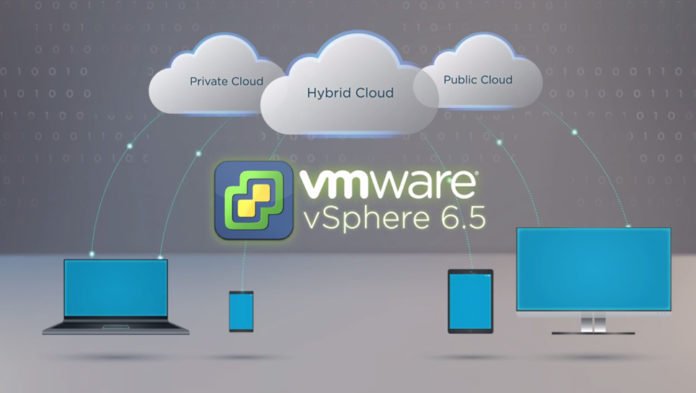Introduzione
 Questa più che è una guida è solamente l’esposizione di un modo utile ed alcune volte necessario per poter forzare lo stop (logicamente anche start e reset) di una VM che è li impantanata.
Questa più che è una guida è solamente l’esposizione di un modo utile ed alcune volte necessario per poter forzare lo stop (logicamente anche start e reset) di una VM che è li impantanata.
Esxcli per chi non lo conoscesse è un framework che fornisce un approccio architetturale ad alcuni elementi (i namespaces).
Usage
escli <conn_options> <namespaces> <app> <cmd> [cmd options]
soft: parametri di connessione utilizzati per effettuare la connessione all’host di ESXi per reperire le informazioni che ci necessitano..
hard: serve a reperire le informazioni su diverse tipologie di path:
nmp: i multipath, che tramite questo plugin servono per gestire le Pluggable Storage Architecture swiscsi: per i comandi legato agli storage iSCI. corestorage: per i comandi legati allo storage
VMs listing
* Ipotizziamo che l’ip del nostro host ESXi sia uguale a 10.0.0.1
esxcli.exe –server 10.0.0.1 vms vm list
Enter username: root Enter password:
Windows Vista 32 bit World ID: 405588 Process ID: 0 VMX Cartel ID: 405587 UUID: 56 4d b5 ab 33 7f 48 08-12 a2 0b d9 cc b9 a1 a7 Display Name: Windows Vista 32 bit Config File: /vmfs/volumes/4c45ae8e-648bf297-1c75-0024811f5501/Windows Vista 32 bit/Windows Vista 32 Windowx Xp-32bit World ID: 17061 Process ID: 0 VMX Cartel ID: 17060 UUID: 56 4d 70 86 f8 fe 08 cb-79 c0 ff be bc 1c 76 46 Display Name: Windowx Xp-32bit Config File: /vmfs/volumes/4c45ae8e-648bf297-1c75-0024811f5501/Windowx Xp-32bit/Windowx Xp-32bit.vmx Debian 5.0 64bit World ID: 551224 Process ID: 0 VMX Cartel ID: 551055 UUID: 56 4d 27 22 01 7d 42 76-a2 ba 0f d3 65 7c 8e 6f Display Name: Debian 5.0 64bit Config File: /vmfs/volumes/4c45ae8e-648bf297-1c75-0024811f5501/Debian 5.0 64bit/Debian 5.0 64bit.vmx CentOS 5.5 32bit World ID: 162354 Process ID: 0 VMX Cartel ID: 162353 UUID: 56 4d f6 35 c6 c2 b9 34-98 87 e8 f2 67 75 e2 30 Display Name: CentOS 5.5 32bit Config File: /vmfs/volumes/4c45ae8e-648bf297-1c75-0024811f5501/CentOS 5.5 32bit/CentOS 5.5 32bit.vmx Fedora 13 64bit World ID: 15447 Process ID: 0 VMX Cartel ID: 15446 UUID: 56 4d fd 8e c9 88 66 cb-02 30 0b ec 22 21 fc c9 Display Name: Fedora 13 64bit Config File: /vmfs/volumes/4c45ae8e-648bf297-1c75-0024811f5501/Fedora 13 64bit/Fedora 13 64bit.vmx
Kill di una VM
Vi informo che questo tipo di stop potrebbe causare il data-loss quindi prima di effettuare un qualcosa del genere cercate nei modi “convenzionali” di portare in modo pulito la vostra VM in uno stato di powered off.
esxcli.exe --server 10.0.0.1 vms vm kill --type force --world-id 551224
Enter username: root Enter password: true
quando non funzona nulla vi potrei quasi assicurare (:P) che questo butta giù di tutto anche vero che prima di provare con “force” che equivale alla forza bruta, potreste provare con:
quando non funzona nulla vi potrei quasi assicurare (:P) che questo butta giù di tutto anche vero che prima di provare con “force”
che equivale alla forza bruta, potreste provare con le opzioni:
soft: che da la possibilità di effettuare uno shutdown clean quindi mandando ai processi un kill o kill –SIGTERM
hard: che invece sarebbe l’equivalente di un KILL -9 o kill -SIGKILL
Se ciò non funziona non vi resta che effettuare il reboot del vostro host ESXi.
Network
Usage: esxcli.exe network {app} {cmd} [cmd options]
Fornisce la possibilità di reperire informazioni circa l’attuale stato della rete. Prima cosa andiamo a visualizzare l’help per vedere che valori possiamo andare a recuperare, quindi:
esxcli.exe –server 10.0.0.1 network –help
Enter username: root
Enter password:
Usage: esxcli.exe network {app} {cmd} [cmd options]
App:
connection List active tcpip connections
neighbor Operations that can be performed on arp tables
esxcli.exe –server 10.0.0.1 network connection list -t all
Enter username: root
Enter password:
Visualizzare la lista dei device di storage
esxcli.exe --username root --password passwd --server 10.0.0.1 corestorage device list t10.ATA_____ST3250318AS_____________________________9VY2S35G____________ Display Name: Local ATA Disk (t10.ATA_____ST3250318AS_____________________________9VY2S35G____________) Size: 238475 Device Type: Direct-Access Multipath Plugin: NMP Devfs Path: /vmfs/devices/disks/t10.ATA_____ST3250318AS_____________________________9VY2S35G____________ Vendor: ATA Model: ST3250318AS Revision: HP34 SCSI Level: 5 Is Pseudo: false Status: on Is RDM Capable: false Is Local: true Is Removable: false Attached Filters: [] VAAI Status: unknown Other UIDs: vml.01000000003956593253333547202020202020202020202020535433323530 mpx.vmhba32:C0:T0:L0 Display Name: Local hp CD-ROM (mpx.vmhba32:C0:T0:L0) Size: 3023 Device Type: CD-ROM Multipath Plugin: NMP Devfs Path: /vmfs/devices/cdrom/mpx.vmhba32:C0:T0:L0 Vendor: hp Model: DVD-RAM GH40L Revision: RB0E SCSI Level: 5 Is Pseudo: false Status: on Is RDM Capable: false Is Local: true Is Removable: true Attached Filters: [] VAAI Status: unknown Other UIDs: vml.0005000000766d68626133323a303a30
Filtro per la view di un singolo device
esxcli.exe --username root --password passwd --server 10.0.0.1 corestorage device list -d mpx.vmhba32:C0:T0:L0"mpx.vmhba32:C0:T0:L0" Display Name: Local hp CD-ROM (mpx.vmhba32:C0:T0:L0) Size: 3023 Device Type: CD-ROM Multipath Plugin: NMP Devfs Path: /vmfs/devices/cdrom/mpx.vmhba32:C0:T0:L0 Vendor: hp Model: DVD-RAM GH40L Revision: RB0E SCSI Level: 5 Is Pseudo: false Status: on Is RDM Capable: false Is Local: true Is Removable: true Attached Filters: [] VAAI Status: unknown Other UIDs: vml.0005000000766d68626133323a303a30
Un saluto,
Giovanni Uccio




